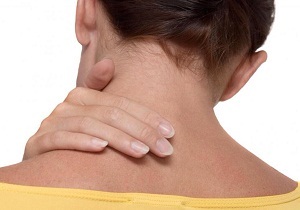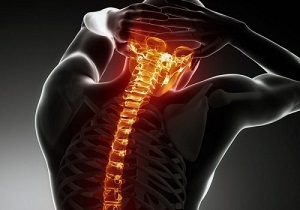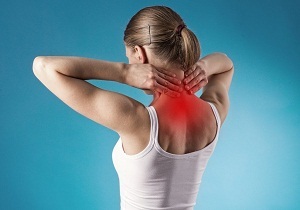
Many negative factors cause negative changes in the intervertebral discs - chondrosis develops. If left untreated, the disease progresses, degenerative and dystrophic processes affect the bone tissue, osteophytes grow, osteochondrosis develops, and pain appears in the neck.
Home treatment is a complex of different measures. It is important to stop the destruction of the discs, eliminate inflammation and pain syndrome and start the regeneration processes of the elastic pad between the vertebrae. A good effect is given by a combination of chondroprotectors, muscle relaxants, NSAIDs with physical therapy, massage and other methods of affecting weakened structures.
Causes and symptoms of osteochondrosis
The disease is getting older every year. Several decades ago, with signs of osteochondrosis of the spine, patients after the age of 40-50 turned to a vertebrologist for help, now many young people have a diagnosis of cervical osteochondrosis in their medical records. What's the reason?
Physical inactivity, prolonged computer use with little or no movement, combined with endocrine pathologies, smoking, poor nutrition and poor ecology increase the risk of damage to intervertebral discs and bone structures. The destruction of cartilage begins much earlier than nature intended.
If before the main cause of cervical osteochondrosis was the natural aging process (the padded cushion between the vertebrae received less nourishment with age, became less elastic, thinned), now there are many other negative factors.
Increases the risk of degenerative and dystrophic processes in the intervertebral discs and vertebral bodies:

- high loads on the support pole during hard work, in professional athletes, when carrying heavy bags, improper lifting technique;
- overweight;
- previous injuries to the back and cervix;
- endocrine diseases, hormonal disorders during menopause, pregnancy;
- improper mineral metabolism, chronic diseases associated with salt deposition, such as gout;
- inheritance;
- deficiency of calcium, magnesium, phosphorus;
- excessive consumption of strong coffee for a long time, addiction to alcohol, drugs, smoking;
- improper diet, lack of vitamins: lack of nutrients reduces the rate and quality of nutrition of cartilage during diffusion;
- reluctance to exercise: the worse the flexibility of the spine, the weaker the muscle corset, the greater the risk of affecting all structures of the supporting spine.
Important information on cervical osteochondrosis:
- the disease proceeds with periods of remission and exacerbation. The more carefully the patient complies with the doctor's recommendations, the lower the rate of degenerative processes, which slows down the transition from mild and moderate stages of the pathology to more severe ones;
- at an early stage, a person does not suspect that a degeneration process has begun in the pillow cushion. The more negative factors act, the more actively the intervertebral discs are destroyed;
- Doctors warn:Overweight often appears against the background of endocrine diseases and poor physical activity, which increases the risk of cartilage damage. If an obese person smokes a lot, often drinks coffee, does hard work or sits for a long time at a computer / TV, then with almost 100% certainty we can say: quite quickly, chondrosis will turn into osteochondrosis, protrusions will appear andintervertebral hernias.
Signs and symptoms of cervical osteochondrosis:
- the first stage: with a lack of nutrients, the elasticity of the cartilage lining decreases, the disc height decreases slightly, weak back and neck pains appear during exercise;
- the more active the deformation of the intervertebral structures, the more often the discomfort worries, the greater the risk of disc destruction. When the fibrous ring breaks, the friction of the bone structures increases, the nerve roots are pinched and pain appears. Pinched blood vessels negatively affect the nutrition of important parts of the brain. When the sensitive structures and vessels are compressed, the nutrition of the brain deteriorates, the headache disturbs, the vision decreases, dizziness, nausea appear;
- at the third stage of osteochondrosis, the integrity of the fibrous ring is violated, the friction of the bone elements increases, frequent pains disturb, hernias develop (protrusion of the disc occurs). Without the use of NSAIDs and analgesics, the pain syndrome complicates the patient's life;
- If you do not consult a doctor, osteochondrosis will enter the quadruple, the most severe phase. The padding is practically destroyed, the mobility of the spine is reduced. The body tries to compensate for the almost complete absence of elastic discs, osteophytes grow - growths that reduce the pressure force on the vertebrae and nerve roots. Stabilization of the support column occurs, the pain weakens, but at the same time the mobility of the spine in the cervical area decreases, it is difficult for a person to move, bend, turn, bend his head. The patient often receives a group of disabilities. In severe cases, surgery may be required to repair weakened vertebral structures using special plates.

Note!With the first or third degree of cervical osteochondrosis, therapy can be performed without hospitalization. In advanced cases, acute pain syndrome is required in patients with the fourth stage of the disease, observation in the vertebrological center or surgery in the neurosurgical department.
Home care
How to treat cervical osteochondrosis? Therapy will be successful if the following rules are followed:
- start therapy only after visiting a vertebrologist or orthopedic traumatologist;
- take the medicines prescribed by your doctor;
- performs a physical therapy complex;
- makes massage and self-massage of problem areas;
- uses doctor-approved folk remedies;
- to adequately equip the workplace and rest: an orthopedic base or a shield under a normal mattress, a low pillow.
Important points for improving the effect of the therapy:

- do not overload the spine;
- does not make sudden movements in the cervical spine;
- change occupation, if in the workplace you have to constantly deal with lifting and moving heavy objects or prolonged static loads;
- patients with a diagnosis of osteochondrosis should not work long in their summer cottage, overloading the lower back. With cervical osteochondrosis, the profession of a seamstress, working on an assembly line, on a construction site is not suitable. It is necessary to choose the type of activity in which it will be possible to alternate loads and rest;
- walking more in the air, moving around, not spending a lot of time in one position: long-term dynamic and static loads are harmful;
- combines oral medications with topical agents. To actively relieve pain, use transdermal patches, which must be fixed on the painful area: neck, shoulder girdle. Thin strips impregnated with an analgesic or a composition from the group of NSAIDs reduce discomfort and show an anti-inflammatory effect. The transdermal patch is invisible under clothing, the period of validity is from 8 to 24 hours (depending on the type);
- with cervical osteochondrosis and for the prevention of the disease, it is necessary to do simple daily exercises to prevent blood stasis, improve the elasticity of the cartilage and the flexibility of the vertebrae. Turns, tilts of the head, circular rotations of moderate amplitude, doctors advise to do two or three times a day. The movements are fluid, without jerks, otherwise the rather thin cervical vertebrae can be damaged;
- be sure to take chondroprotectors for 4-6 months or more to restore the height and quality of the intervertebral disc. At 1-3 degrees of osteochondrosis, compresses and ointments with chondroprotective properties give a good result, at 4 degrees the compositions are ineffective;
- take NSAIDs as directed by a doctor, preferably with selective action. Non-steroidal anti-inflammatory compounds that suppress only one type of cyclooxygenase enzyme do not have a pronounced negative effect on the body. Drugs are more expensive than traditional NSAIDs, but the negative effect on the central nervous system, heart and digestive tract is several times less;
- diet for cervical osteochondrosis reduces the rate of destruction of the shock-absorbing pad, in combination with medications, accelerates the regeneration processes. Be sure to eat dishes with jelly, green leafy vegetables, red fish, vegetable oils, bran, turkey meat, dairy products, hard cheeses. It is necessary to drastically limit strong coffee, animal fats, sweets, carbonated drinks, smoked meats, foods with purines, sour fruits and berries. It is important to give up alcohol and smoking.
Drugs
In the treatment of cervical osteochondrosis, a complex of drugs is required. Chondroprotectors are taken at the first or third stage of the pathology. With the destruction of the intervertebral disc, the rupture of the fibrous ring, it is not worth spending a lot of money on a long course of therapy to buy this type of drugs: chondroprotectors are effective only if you keep a sufficient volume of the hyaline swab.
Effective drug groups:
- analgesics;
- non-steroidal anti-inflammatory compounds;
- neurotropic B vitamins;
- chondroprotectors;
- transdermal patches;
- warming ointments with red pepper, camphor, snake and bee venom;
- drugs to activate blood circulation.
Other treatments:

- turpentine bathsin the treatment of osteochondrosis. After a course of procedures, the nutrition of the hyaline cartilage and intervertebral joints improves, the pain syndrome decreases, and the mobility of the problem area improves. Baths with a white and yellow turpentine emulsion or a mixture of two types of natural products based on processed pine resin are most often used in the treatment of thoracic and lumbar osteochondrosis. But with damage to the cervical spine, the technique also benefits. The procedure has a beneficial effect on the whole body and on the support pole, which allows to recommend a useful and convenient technique for home physiotherapy;
- gymnasticsfor cervical osteochondrosis. Exercises should be done slowly, with minimal amplitude in the first few lessons. Gradually, tilts, turns of the head, rotations can be performed more actively, but jerks and pain should not be allowed during the exercise. Exercises for osteochondrosis for the cervical area, the doctor selects individually, based on the severity of osteochondrosis. In addition, you can massage the neck and shoulder area: the effect is moderate, without strong pressure.
The best option is to combine home treatment with a visit to the physiotherapy room. Magnetic field, amplipulse, applications of ozokerite, mud therapy, turpentine baths increase the effectiveness of home treatment for cervical osteochondrosis. For the prevention of degenerative and dystrophic changes, it is necessary to avoid exposure to negative factors, monitor the loads on the neck and shoulder girdle.




































